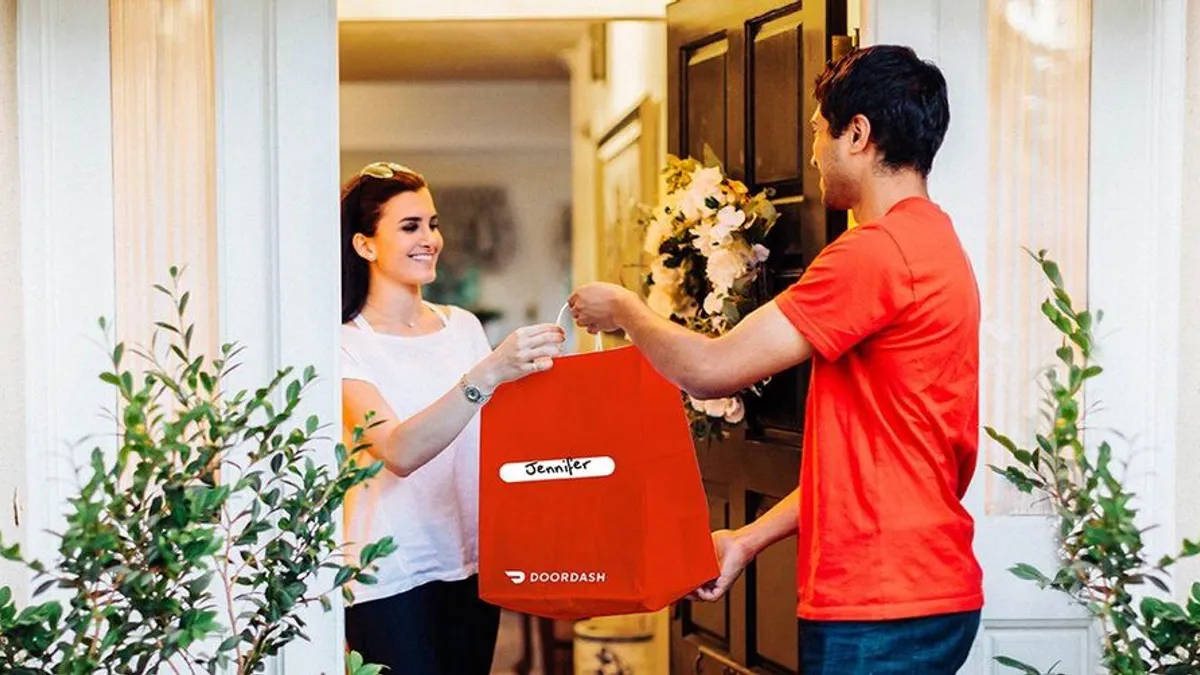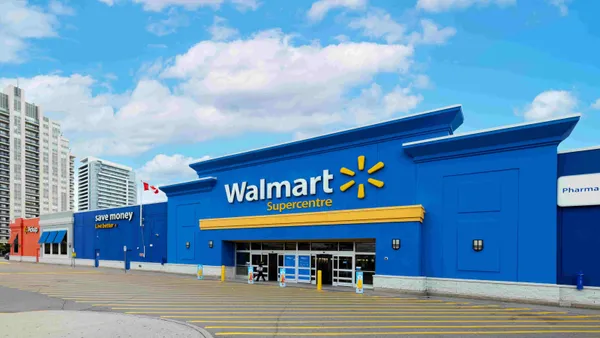Dive Brief:
- DoorDash has added grocery delivery to its app, the company announced in a blog post Thursday. In the coming weeks, 75 million U.S. consumers will have access to the service through a network of chain and local retailers.
- Smart & Final, Meijer and Fresh Thyme Farmers Market now offer delivery to shoppers via DoorDash in major metro area inside their operating regions. Over the next few weeks, DoorDash will add service from Hy-Vee in the Midwest as well as Gristedes/D’agostino in the New York City area.
- Delivery from all partner grocers will be available to members of DashPass, DoorDash’s $9.99 per month subscription service. To promote the expanded service, new and existing DashPass members will receive $15 off their next grocery or convenience store delivery.
Dive Insight:
With this, DoorDash becomes the latest delivery firm to muscle in on e-commerce turf that has so far been dominated by Instacart.
As online grocery orders have risen dramatically during the pandemic, last-mile companies are eager to cut in and expand their services. This includes Amazon, which saw second quarter online grocery sales triple year-over-year through its delivery from its Fresh service and Whole Foods stores, and will soon launch its new supermarket chain. It also includes Uber, which this summer announced it too will offer grocery delivery in major U.S. cities.
Like Uber, DoorDash is eager to partner up with grocers to cover the pricey last mile of delivery. DoorDash has been gradually working its way up to this point. Over the past few years, it’s offered grocery fulfillment to select retailers like Walmart, Hy-Vee and Coborn’s through a white-label service called DoorDash Drive. The company also offers prepared meal delivery — a service retailers have begun spinning off as category sales have risen — from chains like Save Mart, Gelson’s and Wegmans, which launched its Meals 2 Go service last spring.
DoorDash also started partnering with convenience and drug store chains like 7-Eleven, Wawa and Walgreens in April, and just this month launched its own online convenience store in eight cities, marking its debut as a retailer in its own right.
Like Uber, DoorDash has a built-in network of drivers and millions of shoppers that have downloaded its app for restaurant delivery. Many of those shoppers may not yet have tried an available grocer, but could easily come onboard through the mobile platform.
According to a DoorDash spokesperson, retailers can handle the picking and packing of online orders in their stores, or they can rely on workers provided by a third-party staffing agency the firm has contracted with. These workers will use a DoorDash-developed shopper app to gather orders — alerting customers of any out-of-stocks along the way — and then place them on a rack near the front of the store, where a driver will pick them up.
As e-commerce demand grows, experts have touted the importance of investing in new fulfillment facilities and practices beyond picking from store aisles. This could mean retailers use more of their own employees to navigate facilities and ensure consistency throughout operations. A recent CNN report noted that Aldi and Sprouts Farmers Markets recently substituted their own workers in place of Instacart workers at stores offering pickup service.
Could DoorDash along with Uber unsettle leader Instacart, which has drawn accusations that it’s overshadowing grocers and siphoning off valuable data? The platforms will all be competing fiercely for online shopping dollars, and this could spark a promotion and innovation war similar to what the crowded restaurant delivery space has seen. On Thursday, fellow online grocery provider Shipt announced it’s adding a la carte delivery to go along with its $99 annual plan.
Retailers, meanwhile, have shown a willingness to partner with multiple fulfillment partners, and may very well continue adding on in an effort to expand their reach. At the same time, having a buffet of options also likely means that retailers can demand more from their e-commerce partners.













